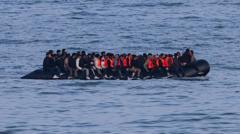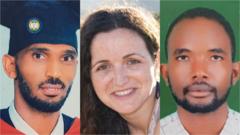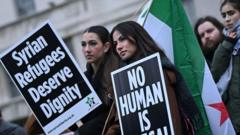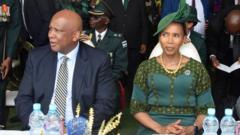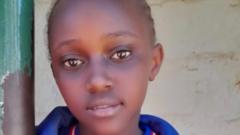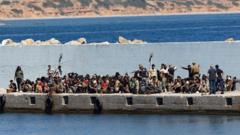**Senait Mebrehtu mourns her daughter, who tragically drowned while seeking a better life, exposing the perilous new routes used by human traffickers.**
**Tragedy on Lake Turkana: A Mother's Grief and Anger Over Migrant Smuggling**
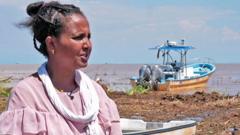
**Tragedy on Lake Turkana: A Mother's Grief and Anger Over Migrant Smuggling**
**As the rise in migrant smuggling continues, a grieving mother confronts the harsh realities of a dangerous journey across Lake Turkana.**
As night fell over the shimmering waters of Lake Turkana, Senait Mebrehtu's heart shattered anew. With tears streaming down her face, she released a bouquet of flowers into the lake to honor her daughter, Hiyab, who lost her life in a desperate attempt to escape Eritrea and reach Kenya. The 14-year-old girl had been traveling with her sister, who survived a harrowing crossing on a perilous new route exploited by smugglers.
Senait, a Pentecostal Christian who fled religious persecution in Eritrea three years ago, journeyed to the lake's shores to confront the site of her daughter's tragic death. "Had I known the extent of the dangers, I would never have allowed my daughters to take this journey," she told the BBC amidst her grief.
In Eritrea, where military conscription often extends indefinitely and includes forced labor, Senait had sought asylum, bringing her two younger children but leaving behind her older daughters who were in danger of conscription. After much pleading, the sisters were sent on a treacherous journey, involving smugglers who facilitated their passage from Eritrea into neighboring Ethiopia and finally to the shores of Lake Turkana, the largest permanent desert lake in the world.
Traffickers confirmed to the BBC that Lake Turkana has become a prominent corridor for illegal crossings. A female smuggler, who wished to remain anonymous, revealed that the route has been dubbed the "digital route," reflecting its recent emergence as a means of transport for Eritrean, Ethiopian, and Somali refugees fleeing their war-torn homelands.
With increased surveillance on Kenyan roads, smugglers have turned to the lake, where dangerous wooden boats, often overloaded, ferry vulnerable migrants. Osman, another Eritrean migrant, who witnessed Hiyab's capsize firsthand, recalled the terrifying moment when strong winds overcame their boat. Tragically, seven people drowned that night in full view of others waiting helplessly.
Senait blamed the smugglers for this tragedy, expressing her anger towards those who disregarded the well-being of the migrants by overloading vessels designed for far fewer passengers. Fishermen from the region have reported finding bodies of migrants in the lake, a grim reflection of the human cost of trafficking.
The UNHCR reported in June 2024 that nearly 345,000 Eritrean refugees and asylum seekers have sought refuge in East Africa, a number that has surged due to ongoing conflicts in the region and the oppressive regime in Eritrea. An Eritrean lawyer based in Uganda explained that many are now using Kenya as a stepping stone to reach safer havens in Uganda, Rwanda, and beyond, where they believe they can improve their chances of securing asylum.
The smuggling ring operates a complex network across East Africa, funneling migrants through various agents until they reach their final destinations, often resulting in substantial costs. Despite the dangers, some choose to stay in Kenya, while others aim for Europe or North America, leaving behind untold stories of hardship and heartache.
In a world filled with hardship and betrayal, the case of Senait Mebrehtu and her daughter serves as a painful reminder of the dangers that many face in their pursuit of safety and a better life. “We are all experiencing the same pain," Senait lamented. “May God heal our land and free us from these tragedies.”

